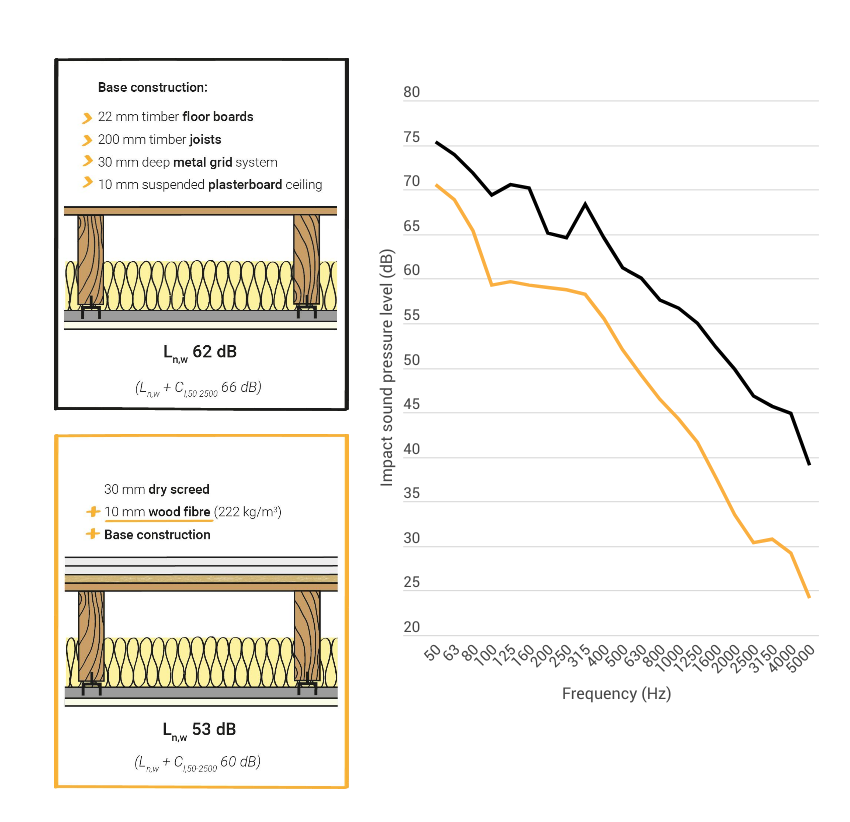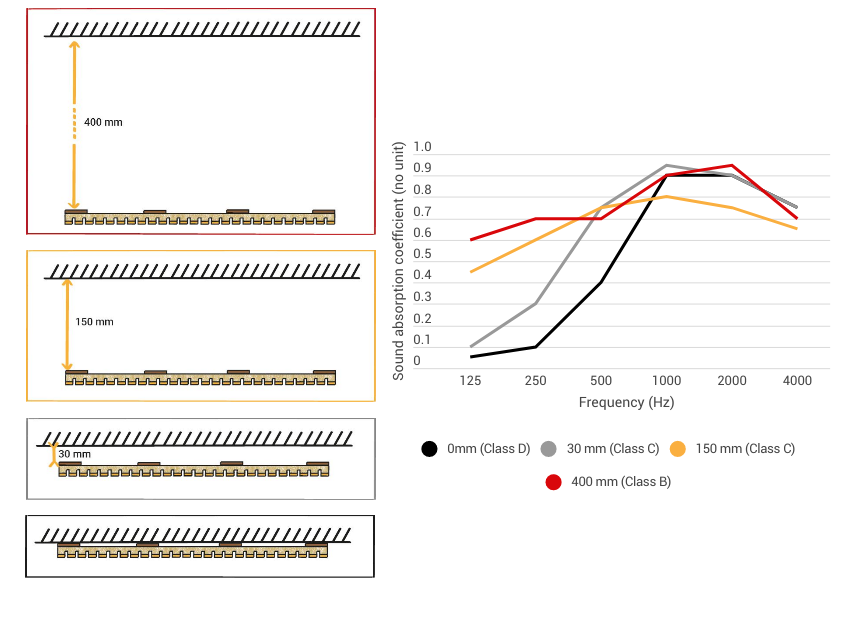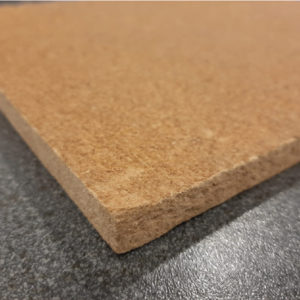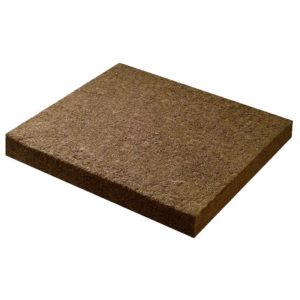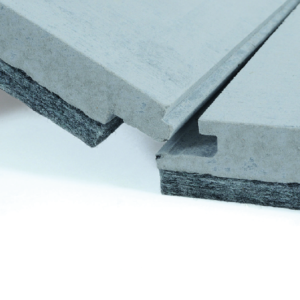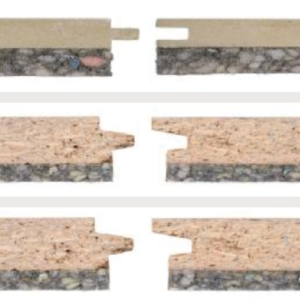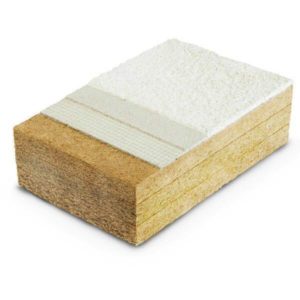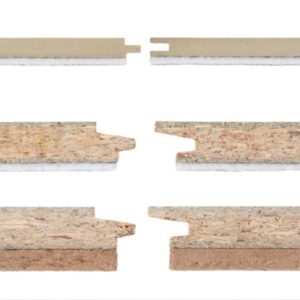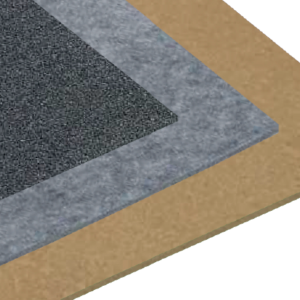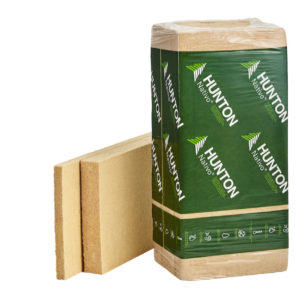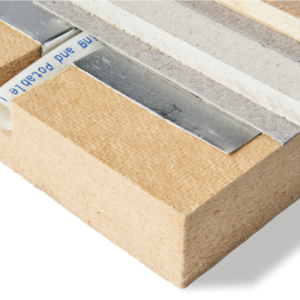Wood fibre
If you are working on a construction project and you hear about wood fibre, you are probably going think that it is used for its thermal insulation properties.
But did you know it also has some interesting acoustic properties? Under the right conditions, it can be a very good acoustic solution for a building project.
This page firstly explains how wood fibre is produced, some of its properties, some materials (or substances) used with it and how sustainable it is.
Then it dives deeper into its acoustic properties and how you can use it as an acoustic product for your design.
It talks a little bit about future materials. And finally, some examples of products are listed at the end.
To help you navigate through the page, here is the summary of the content:
- Producing wood fibre
- Properties, materials and sustainability of wood fibre products
- Acoustic performance of wood fibre products
- Future wood-based acoustic materials
- Read more about wood fibre
- Some examples of products
Enjoy the read.
Producing wood fibre
The process of extracting fibres from wood is fairly old. It was worked out around the 1850s.
It can be produced with the waste or the off-cuts of the factories, or also the waste from woodland thinning. Pine, spruce, larch or fir are species generally preferred for the production of wood fibre products.
Wet and dry processes exist to produce wood fibre. To know more about them, visit Greenspec’s website here.
Density
The density of wood fibre panels greatly varies depending on the application.
It starts from 50 kg/m3 when used as a thick material installed in cavities.
And reaches 280 kg/m3 when used as a thinner material in floor constructions (as an acoustic underlay for example).
Panel thickness
The thickness of wood fibre panels that come out of a wet production chain ranges from 8 mm to 30 mm. To make thicker products, panels are glued together.
The thickness of wood fibre panels that come out of a dry product chain can be up to 240 mm.
Cost comparison
Wood fibre products are pretty affordable.
But they can be slightly more expensive than other materials such as mineral or rock fibre products.
Properties, materials and sustainability of wood fibre products
Bonding agents
When made using a ‘wet process’ (see the section Producing wood fibre above ), no additional agents are required to bond the fibres together. The sap does everything with the help of water and heat.
However, with the the ‘dry process’, you need polyurethane resin to create the bond between the fibres.
Sometimes also paraffin, latex or cellulose fibres are added as additional binders (cellulose fibres are particularly useful to increase the strength and the stiffness of the panels).
Finished panels might also need to be glued together (see above in Panel Thickness).
Moisture resistance
Wood fibre is not naturally moisture resistant. However, this can be solved by adding antifungal agents such as boron salt or ammonium phosphate.
Fire resistance
Wood fibre is a combustible material, but can still delay the spread of fire.
For extra resistance, flame retardant agents can be added.
Water resistance
Sometimes, there might be a need to make wood fibre panels water resistant. Especially when they are installed in roof constructions.
In this case, the bitumen, paraffin, latex or also silicate (more natural) are added to the fibres.
Sustainability
Wood fibre products are biodegradable and 100% recyclable.
It is important for the wood fibre products to be FSC or PEFC certified. This ensures that the wood is sourced from forests sustainably and responsibly managed.
Acoustic performance of wood fibre products
Wood fibre has sound absorbing and anti-vibration properties that depend on various characteristics:
- its thickness.
- its density.
- the fibre type and size.
Note: the fibre type and size have a big influence on the acoustic properties of wood fibre. It is also very specific for each product and manufacturer. So unfortunately for specifiers who like to advise for performances and physical characteristics, it is sometimes preferable to recommend products based on their product name or their brand.
This section gives examples of when these qualities could be exploited, including:
- within the cavities of wall, floor and roof constructions to improve their airborne sound insulation performance.
- as underlays below dense boards or dry screed elements to improve the impact sound insulation performance of floor constructions.
- as (part of) a finish to absorb sound within spaces and reduce the sound reverberation inside.
Each section below presents some ideas of systems as well as the performances achieved.
Airborne sound insulation of wood fibre
As discussed above, you can use wood fibre to control the airborne sound insulation of wall, floor and roof constructions.
This is done buy mostly installing it in the cavities to absorb sound inside and control acoustic resonances at certain frequencies.
See below a sketch explaining the benefit of installing an absorber in a cavity.
Sketch representing the sound insulation influence of installing an absorber in the cavity of a double leaf separation
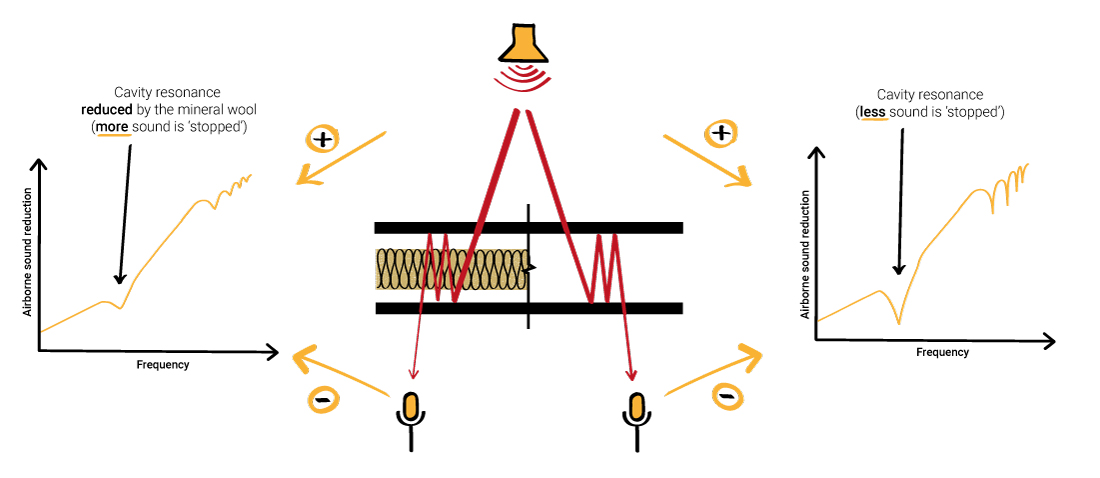
Examples of cavities are:
- wall cavities (such as drywall wall partitions and lining).
- ceiling cavities.
- standard raised floors.
- as underlay under dry screeds (see more information about this in the floor construction paragraph)
Most of this is explained with examples of constructions and performances in the paragraphs below.
Wood fibre in wall constructions
You can install wood fibre as insulation in the wall cavities whether they are:
- within external partitions.
- within lightweight/drywall partitions.
- plasterboard lining.
- between two masonry partitions.
- between two Cross Laminated Timber panels.
Examples to control the airborne sound insulation of wall constructions with wood fibre

For this application, the density of wood fibre products is generally around 50 kg/m3.
Note: Although wood fibre could be used in cavities, other more economical materials (with similar properties) might be preferred such as mineral wool, rock wool, fleece/felt, hemp, kenaf, etc.
See below some ideas of performances you could obtain if you install wood fibre in wall constructions.
Examples of airborne sound insulation performance achieved with hollow clay, wood fibre and plasterboard
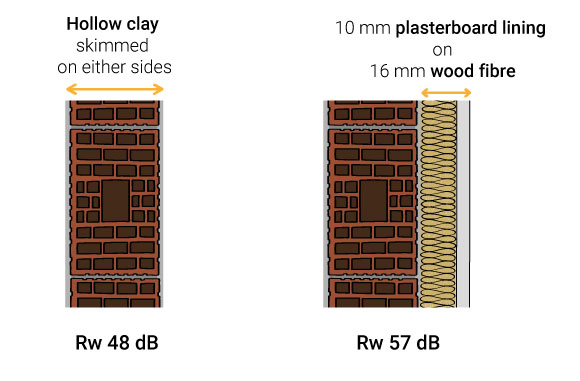
Examples of airborne sound insulation performance achieved with wood fibre within drywall partitions
(Courtesy of Soprema)

Wood fibre in floor constructions
To improve the airborne sound insulation performance of floor constructions, you can think of installing wood fibre in three different areas as follows:
- within ceiling cavities.
- within raised floor cavities.
- under dry screed systems.
Examples of applications of wood fibre for floor constructions
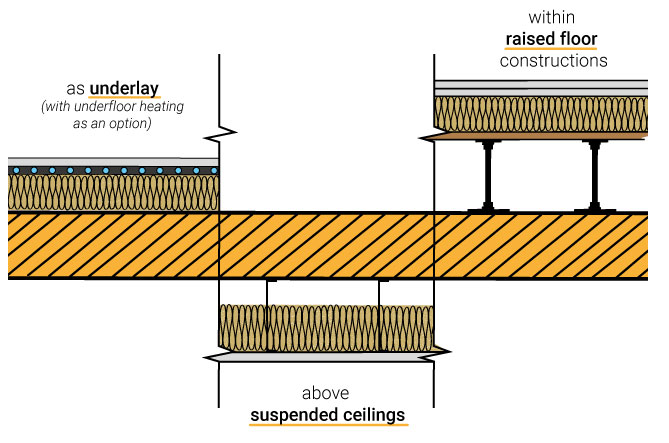
Why installing wood fibre insulation under dry screed systems improves the airborne sound insulation performance of floor constructions? Because it has a fairly low density and traps a certain amount of air. Therefore this creates a sort of cavity which has acoustic benefits for the floor construction, especially in terms of airborne sound insulation. This is a great feature that other fibre insulation materials, such as mineral wool or rock wool, have when used under dry screeds.
The density of wood fibre products installed in ceiling voids or raised floor cavities is generally around 50 kg/m3. For wood fibre installed as underlay, the density ranges between approximately 180 and 250 kg/m3 .
See below some ideas of performances you could achieve for timber joist floor and reinforced concrete constructions.
Sound Reduction Index (dB) of timber joist floor constructions with
no flooring systems and a flooring system including a 10 mm wood fibre underlay
(Courtesy of Fermacell)
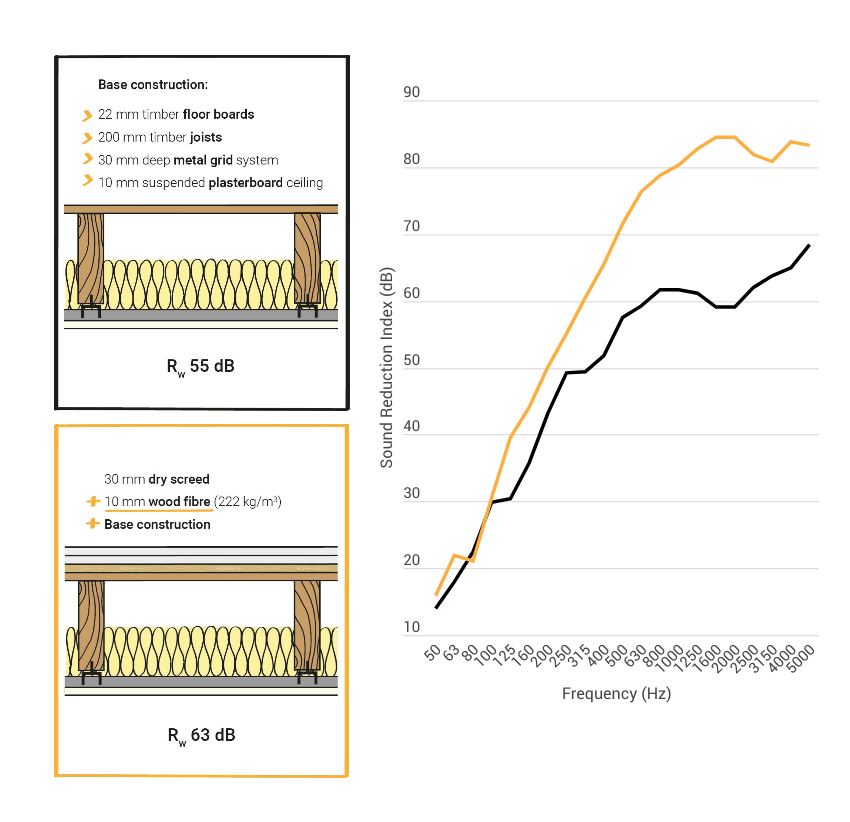
Sound Reduction Index (dB) for different flooring systems, on a reinforced concrete slab, with wood fibre underlays of varying thicknesses including:
no wood fibre, 10 mm wood fibre, 20 mm wood fibre and 40 mm wood fibre
(Courtesy of Fermacell)

Wood fibre in roof constructions
Roof construction is one of the most popular areas where you can install wood fibre. And this is mainly for its thermal properties.
It also brings acoustic benefits whether you install it as cavity insulation (between rafters for example) or as a sheathing/sarking board.
See some examples of applications below.
Examples of applications of wood fibre for roof constructions
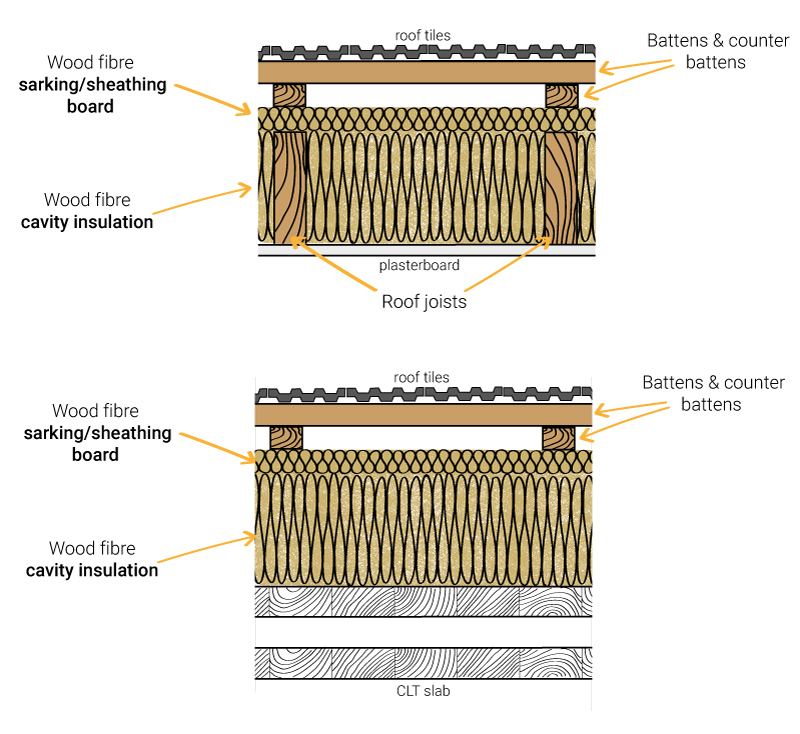
Generally, you obtain better performances with wood fibre if you use it as a continuous layer (i.e. heating / sarking board in the examples above). This is because you have less structural connections (i.e. acoustic bridging) between the outside construction and the internal fabric/lining.
Although this might be cancelled out if:
- you use too many screws to fixe the wood fibre, or;
- you have openings in the roof construction to ventilate the void.
Note: Also, if you install the wood fibre as a sheathing board in a lightweight roof construction, you improve its capacity to control rain noise (noise created when the rain hits the roof).
See below for examples of performances you could achieve by adding wood fibre to a timber roof construction.
Examples of airborne sound insulation performances for roof constructions with wood fibre
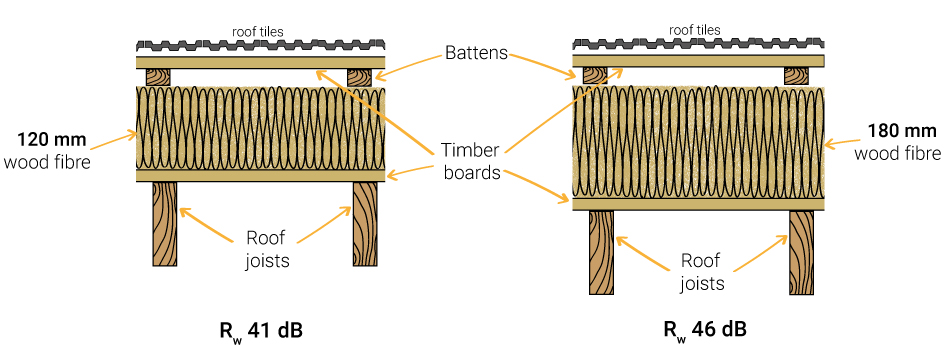
Impact sound insulation of wood fibre
Wood fibre is a resilient material which means that it has some anti-vibration properties.
Therefore it can be used as an underlay to improve the impact sound insulation performance of floor constructions. Meaning, reducing the noise generated in a room when people walk on the floor above.
As introduced in the section Floor constructions above, you generally install wood fibre products below dense boards or other types of dry screeds (concrete screeds are too heavy and would compress it too much).
To ensure a certain acoustic efficiency, wood fibre products used as underlay need to:
- be minimum 10 mm thick (up to 40 mm).
- be fairly dense between approximately between 150 kg/m3 and 250 kg/m3.
Note: sometimes, the wood fibre/underlay can also be specified in terms of dynamic stiffness (MN/m²).
See below some indicative effect/improvement you could achieve on masonry or timber floor constructions with food fibre underlays (for detailed specifications, please contact Atelier Crescendo).
Impact sound pressure levels of timber joist floor constructions with
no flooring systems and a flooring system including a 10 mm wood fibre underlay
(Courtesy of Fermacell)
Impact sound pressure levels for different flooring systems, on a reinforced concrete slab, with wood fibre underlays of varying thicknesses including:
no wood fibre, 10 mm wood fibre, 20 mm wood fibre and 40 mm wood fibre
(Courtesy of Fermacell)
Note: have you compared the improvement, in impact sound pressure levels, obtained with 10 mm wood fibre on the concrete slab (-20 dB) and on the timber joists construction (-9 dB)?
Something to notice is that the improvement (i.e. reduction) is not as great with thin underlays on timber constructions. This is particularly important to know when specifying or selecting underlays for timber constructions.
Sound absorption of wood fibre
Wood fibre is used as a sound absorber, ‘indirectly’ and ‘directly’.
- Indirectly, because you can use in wall, floor and roof cavities to avoid sound resonances (see Airborne sound insulation of wood fibre above).
- Directly, because you can also use it as part of a finish to absorb sound in spaces.
The graphs below show the sound absorption characteristics of timber slatted systems, with varying cavities, that include wood fibre between the slats.
The wood fibre is:
- approximately 110-140 kg/m3 dense.
- 20 mm thick.
- 70% of the overall layer (see image just below).
Description of timber slatted system including wood fibre to absorb sound

Sound absorption coefficients of timber slatted systems, including wood fibre between the slats, of varying cavities:
0 mm, 30 mm, 150 mm and 400 mm.
(Courtesy of Lignotrend – system: LIGNO Acoustic light Type 3S_33_a70g)
Future wood-based acoustic materials
As a desire to make construction more sustainable, more and more R&D is undertaken to find and develop new acoustic materials. These materials use more natural materials, store more carbon and are 100% recyclable if not 100% biodegradable.
One material to keep an eye on is wood-based pulp fibres, which is able to absorb sound. To know more about it, follow this link.
Read more about wood fibre
The information presented on this page has been extracted from the resources listed below.
Feel free to consult them if you want to know more about some specific topics.
Note also that some test data have been provided by some manufacturers Soprema, Fermacell or also Lignotrend. To access this data, please get in touch with Atelier Crescendo.
[1] L’isolation phonique écologique – Matériaux et équipment, Mise en oeuvre et étude de cas en neuf et en rénovation – Jean-Louis Beaumier
[2] Le grand livre de l’isolation: solutions thermiques, acoustiques, ecologiques et hautes performances – Thierry Gallauziaux & David Fedullo
[3] Greenspec webpage on wood fibre insulation: www.greenspec.co.uk/building-design/wood-fibre-insulation
You can also listen to the ‘Back to Hearth’ podcast Chris Brookman, especially the episode on wood fibre here.
Examples of products
Are you looking for examples of products? The list below has been created for you!
Also, feel free to contact Atelier Crescendo if there are products you would like to include.
Showing 1–12 of 18 results

